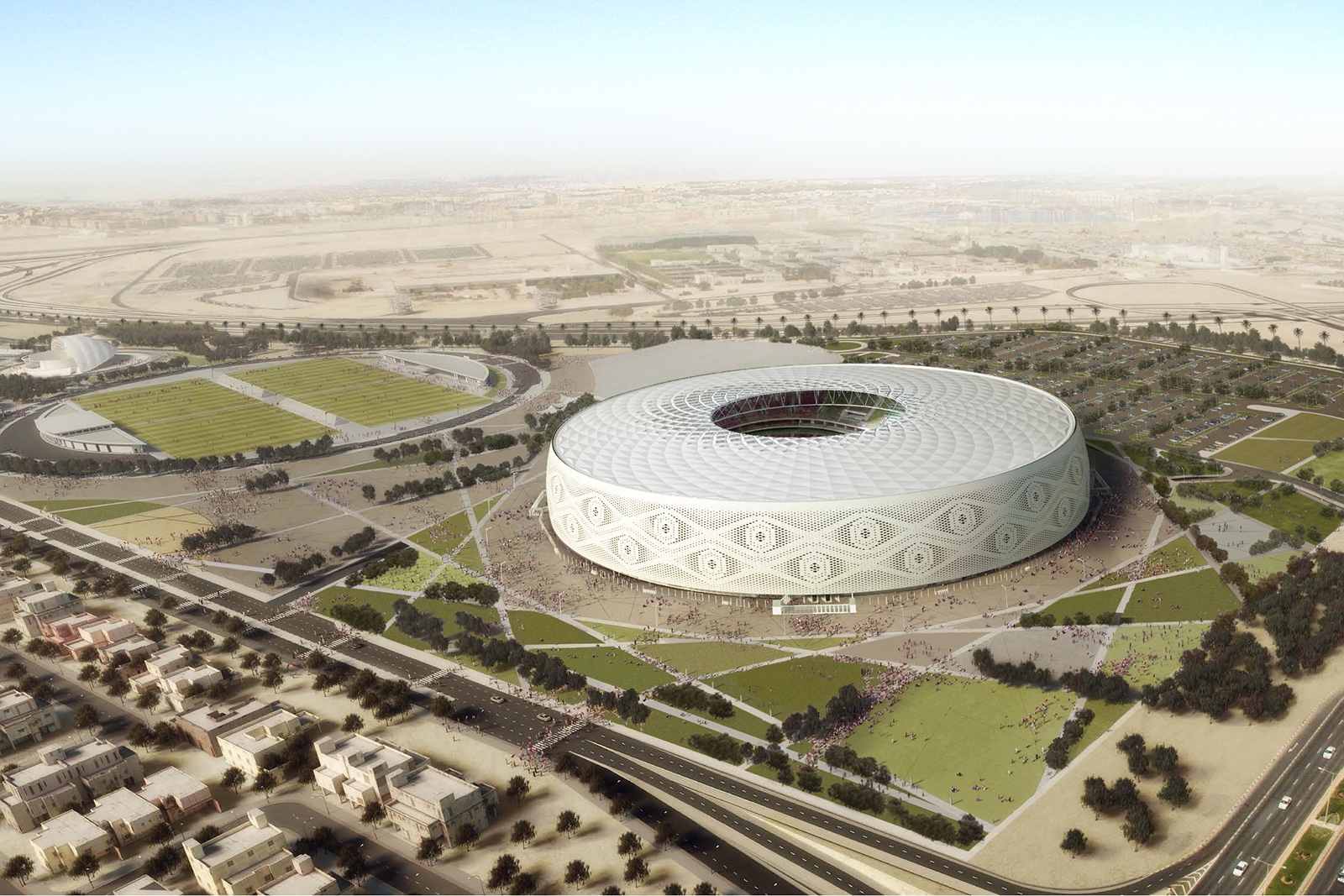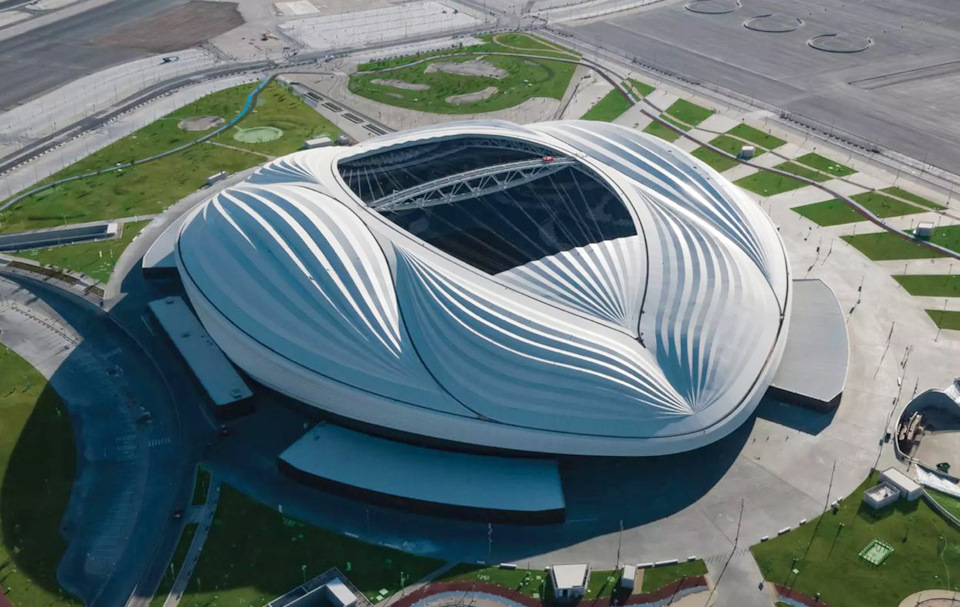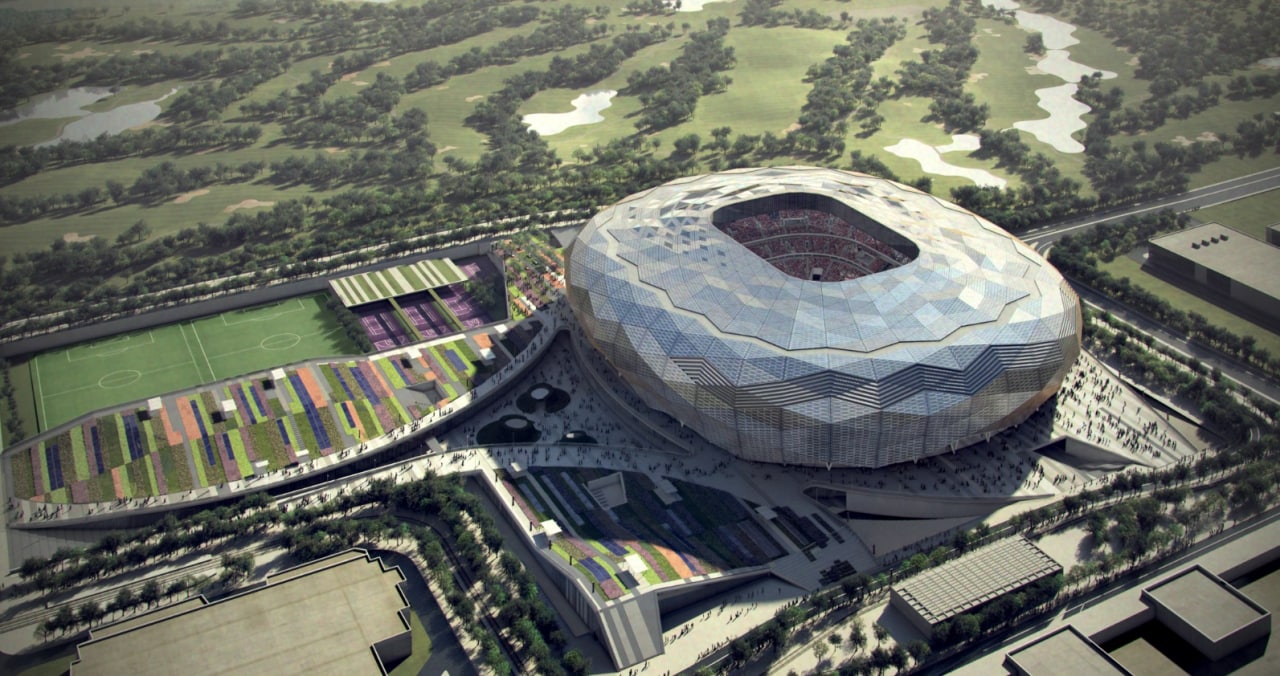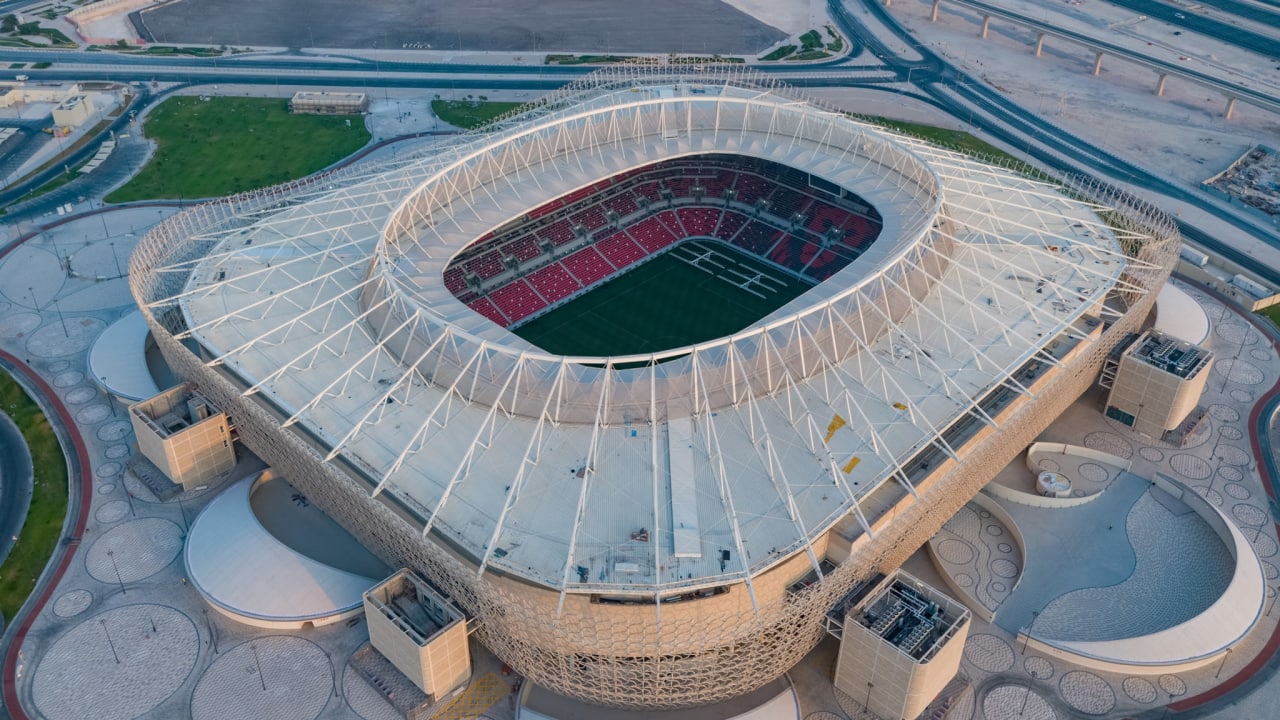FIFA World Cup Qatar 2022 is set to kick off in November. It will be the 22nd edition of the competition, and the first played in the Arab world.
To this event, the country has erected grandiose sports arenas, which will be able to accommodate tens of thousands of fans.
The designs and original forms of these stadiums draw the most attention of football community to themselves.
All these grandiose sports arenas are located at a close distance from each other and the fans who arrived in Qatar will be able to easily get from one sports arena to the other one simply by subway.
We present the brightest projects of sports giants of the upcoming mundial:
1. Lusail Iconic Stadium, owned by the Qatar Football Association, is the biggest stadium in Qatar and one of eight stadiums being converted for the 2022 FIFA World Cup Qatar.
Host city – Lusail.
Gross capacity – 86,250. After the World Cup the stadium's capacity will be reduced to 20,000 seats.
The stadium, located 15 kilometers north of Doha, will host the final game of the 2022 FIFA World Cup.
Its design is inspired by the dance of light and shadows cast by traditional lamps.
The stadium’s shape and façade echo the intricate decorative motifs on bowls, vessels and objects of art of this region.
In addition to final, the stadium will also host six matches of the group stage, three knockout stage matches and one semi-final.
- Stadium 974
Host city – Doha.
Stadium 974 can seat up to 40,000 spectators.
The stadium, located in Ras Abu Aboud district in the municipality of Doha, was built specifically for the FIFA World Cup Qatar 2022. Opened on November 30, 2021, it is a temporary venue made from 974 recycled shipping containers. In addition, 974 is the international dialing code for the country. After FIFA World Cup 2022 the stadium will be dismantled. It is the first temporary venue in FIFA World Cup history.

The stadium is constructed on a 450,000 square-meter waterfront site and is situated on an artificial promontory on the Persian Gulf. The stadium will be dismantled after the mundial and the building materials will be reused for both sports and non-sports projects. Visiting this stadium, fans will be able to say without exaggeration that they watched World Cup matches in a stadium that no one else will ever be able to visit. .
- Al-Tumama Stadium
Host city – Doha.
The stadium can seat up to 40,000 spectators.
The stadium’s architectural design takes its inspiration from the traditional kufiya hat, is an important part of the traditional costume of this area. This stadium celebrates culture, history and symbols of the region.
After FIFA World Cup 2022, the stadium capacity will be reduced to 20,000 and surplus seats will be donated to developing countries. This gesture perfectly reflects the generosity of Qataris.

A boutique hotel will replace the stadium's upper stands and a branch of the world famous clinic Aspetar Sports Clinic is set to open on the site of the stadium. Thus, the stadium will not cease to be useful to the local community for many years after the end of World Cup.
- Al Bayt Stadium
Host city – Al Khor.
Gross capacity – 60,000.
Al Bayt Stadium is located in the city Al Khor where many people dive for pearls and are engaged in fishing. The stadium is unique with its giant tent structure covering the whole stadium that is named after bayt al sha’ar – tents historically used by nomadic peoples in Qatar and the Gulf region.
Its innovative design resembles a wind-fluttering canvas, from which the Bedouin traditional dwelling is made.

This stadium is distinguished not only by its stunning design, but it also uses a unique cooling system, which will not allow fans and players to overheat even in the hottest moments of the tournament. .
- Al Janoub Stadium
Host city – Al Wakrah.
The stadium can seat up to 40,000 spectators.
Formerly known as Al-Wakrah, Janoub Stadium is a retractable roof football stadium. The design of Al Janoub Stadium reflects the traditional boat of the region, the dhow.

Al Wakrah city is one of the oldest continuously inhabited settlements of Qatar and it has been known as fishing and pearling center for a long time.
The stadium design reflects wind-blown sails and use of wood and natural materials are a reference to the cultural heritage of this region.
- Education City Stadium
Host city -- Al Rayyan (Education City).
Gross capacity -- 45 000.
The new Education City Stadium is located in the midst of several world-class university campuses at Qatar’s global center of excellence, Education City, and situated at the heart of the innovation hub. Unique cooling systems and green spaces around the stadium indicate that it was built with sustainability in mind and with an eye to the future.
The stadium takes the form of a jagged diamond that sparkle as the sun moves across the sky. Following the FIFA World Cup, the stadium capacity will be reduced to 25,000 seats and surplus seats will be donated to developing countries.

The stadium is located just seven kilometers from the city center, and therefore, every fan will be able to choose entertainment to their liking: play golf or go shopping.
- Ahmad Bin Ali Stadium
Host city -- Al-Rayyan.
The stadium can seat up to 44,470 spectators.
Popularly known as the Al-Rayyan Stadium, Ahmad Bin Ali Stadium is a multi-purpose stadium. The stadium’s design reflects the Qatari environment. As for its external facade, it is in the form of ripples of sand dunes, while the distinctive geometric shapes depict the beauty of the desert and the local flora and fauna.
The inhabitants of the region are famous for their respect for traditions and cordial hospitality, with which the fans of the championship will be greeted.

The stadium was built specifically for the 2022 FIFA World Cup and after the World Cup the stadium will be reduced to 21,000 seats. The stadium built on the very edge of the desert and it is connected to the city by a new highway.
A new shopping and entertainment center, The Mall of Qatar, is located in this area.
- Khalifa International Stadium
Host city – Doha.
Gross capacity – 45,000.
The redesigned Khalifa International Stadium was originally built in 1976 and renovated and expanded in 2005 to serve as the centerpiece of the 2006 Asian Games hosted by Qatar.
The Khalifa International Stadium has been Qatar's main football stadium since 1976 and has been a cornerstone of the country's sporting heritage.
The design of the stadium symbolizes continuity and traditions of fans.
Two new double arches have been added during reconstruction in preparation for the matches of the World Cup.

The stadium can boast a convenient location 10 km from the city center. The Khalifa International Stadium is part of a vast complex, which also includes the Qatar Olympic Aquatics Center and indoor pavilion as well as the shopping and entertainment center, The Villaggio Mall, park and The Torch Doha Hotel. The stadium also houses the Museum of Sports and Olympic Movement of Qatar.







